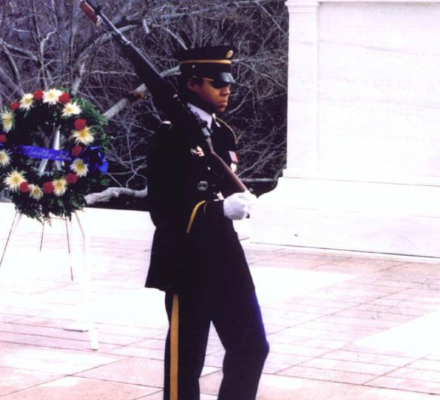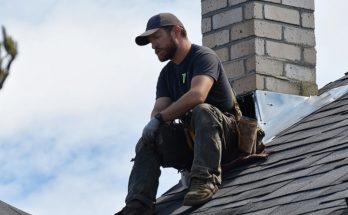FORT DETRICK, Md. — His uniform was impeccable. His buttons, badges and boots glistened under the auditorium lights. His movements were methodical and perfectly executed.
Then a young private first class, Danyell Walters vividly remembers the first time she witnessed the spectacle of what it took to be a sentinel at the Tomb of the Unknown Soldier.
Walters, the first African-American woman to serve as a tomb guard, also remembered that the Soldier performing the routine looked nothing like her. But that was hardly an impediment for what she knew she could achieve.
“What I admire most of my younger self was that when I saw the tomb guard presentation, I looked past that it was a man standing out there doing that,” Walters said. “I immediately put myself there … that is what led me to see it through.”
During Women’s History Month, Walters, now a sergeant major serving as the senior enlisted advisor for U.S. Army Medical Logistics Command at Fort Detrick, reflected on her time as a tomb guard nearly 25 years ago.
At age 22, then-Sgt. Wilson became one of just four women to ever serve as a tomb guard with the 3rd U.S. Infantry Regiment, known as “The Old Guard.” She followed Sgt. Heather (Johnson) Wagner, who was the first woman to earn her tomb guard badge in 1996 after the Army opened the assignment to women a few years earlier.
Breaking down barriers was the last thing on Walters’ mind when she took her first daylight watch over the tomb in 1997. She said it wasn’t until afterward — when she was asked if she knew the significance of what she had just done — that she realized.
“That was so not my focus,” Walters recalled, as she remained intent on accomplishing the “no-fail mission” of a tomb guard. “… When it came to The Old Guard, the Army was changing when it comes to being diverse in gender, and we were a part of that change.”
The Tomb of the Unknown Soldier, located at Arlington National Cemetery, honors the remains of unidentified American Soldiers and is guarded 24 hours a day. The hourly changing of the guard at the tomb is a solemn event that’s attracted crowds in the nation’s capital since it was first opened to the public in 1932.
Between ceremonies, a lone sentinel marches 21 steps along a black mat behind the tomb. They turn and face east for 21 seconds, then north for 21 seconds, and then retrace their the 21 steps back. The 21 steps and 21-second pauses symbolize the military’s highest honor — the 21-gun salute.
Looking back on the experience, Walters recalled the strict training regimen that went into the assignment, but as a military police officer with high standards of appearance and a desire for perfection in all she did, it was something that came naturally to her.
She said she was proud to be able to set an example and be an inspiration to future female Soldiers to know that, despite traditional societal norms and hurdles, whatever they wanted to achieve was possible.
“I think it’s easy when you have someone who looks like you doing something that hasn’t been done before to get inspired,” she said. “Because now you know your potential is limitless. Even if there’s barriers there, you’re more motivated to penetrate through them.”
Walters’ drive to succeed began as a teenager growing up just outside Montgomery, Alabama. The oldest of four siblings to a single mother, she attended an all-black school where teachers shared a passion to celebrate their heritage and never let it be a barrier to future success.
As she graduated high school, Walters, who latched onto the former slogan “Be All You Can Be,” saw the Army as an opportunity.
It turned out to be a lifetime of opportunity for Walters, who reenlisted in 1998 as a medical logistician. In February, she marked 28 years of active-duty service.
Since joining AMLC, Walters has served as a leading voice for Soldiers throughout the organization, as well as its Project Inclusion campaign to work toward the Army’s goal of promoting diversity, equity and inclusivity and building a more cohesive workforce.
“I never thought I would have a story to be told,” Walters said, looking back on her time as a tomb guard. “But I’m thankful that I do … hopefully, our stories can inspire others to look past barriers and reach their full potential.”





